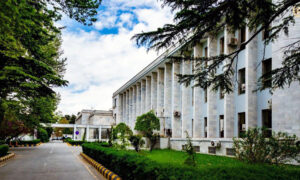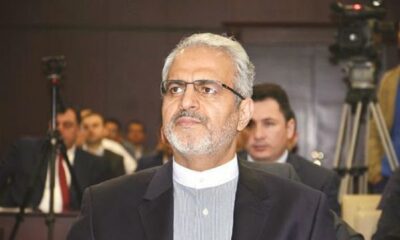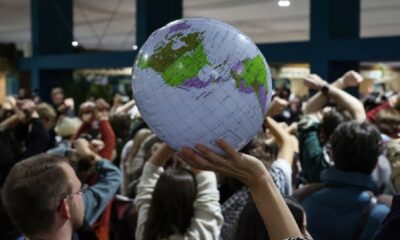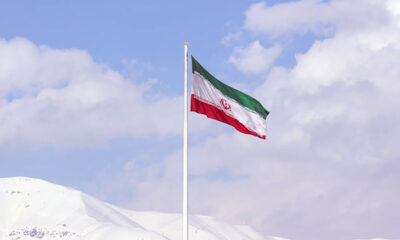Climate Change
Gaza conflict has caused major environmental damage, UN says
Gaza’s environment was already suffering from recurring conflicts, rapid urban growth, and high population density, before the most recent conflict began on Oct. 7.
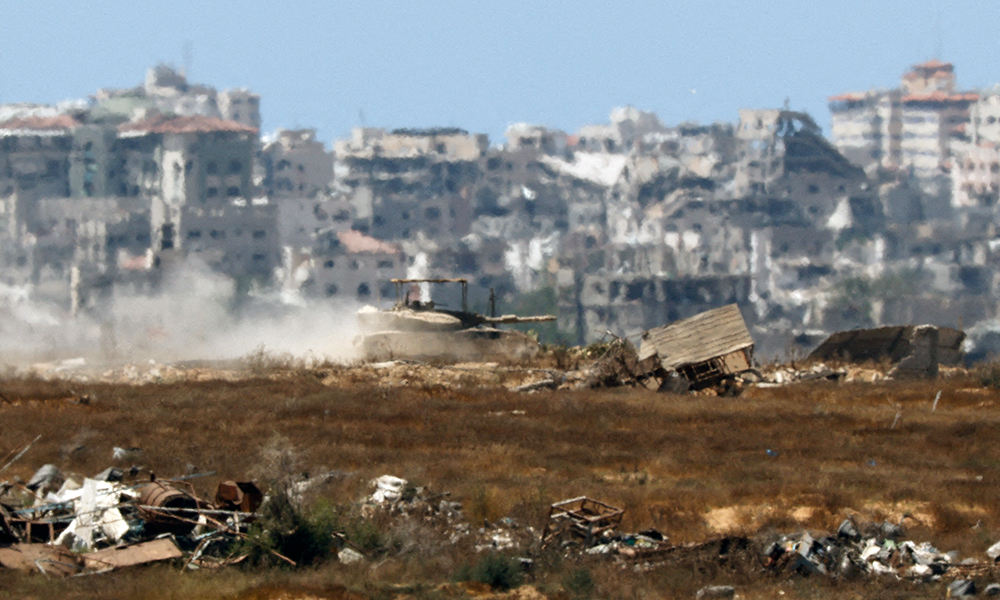
The conflict in Gaza has created unprecedented soil, water and air pollution in the region, destroying sanitation systems and leaving tons of debris from explosive devices, a United Nations report on the environmental impact of the war said on Tuesday.
The war between Israel and Hamas, the Islamist movement that controls the Gaza Strip, has swiftly reversed limited progress in improving the region's water desalination and wastewater treatment facilities, restoring the Wadi Gaza coastal wetland, and investments in solar power installations, according to a preliminary assessment, opens new tab from the U.N. Environment Programme (UNEP).
Explosive weapons have generated some 39 million tons of debris, the report said. Each square metre of the Gaza Strip is now littered with more than 107 kilograms (236 lbs) of debris. That is more than five times the debris generated during the battle for Mosul, Iraq, in 2017, the report said.
"All of this is deeply harming people's health, food security and Gaza's resilience," said UNEP Executive Director Inger Andersen.
Gaza's environment was already suffering from recurring conflicts, rapid urban growth, and high population density, before the most recent conflict began on Oct. 7.
The U.N. assessment adds to concerns about the unfolding humanitarian crisis and the environmental costs of war, with Ukraine also recording widespread ecological damage over the past two years.
"Understanding the environmental impacts of war is a grand challenge of our time," said Eoghan Darbyshire, a senior researcher at the UK-based nonprofit Conflict and Environment Observatory. "The impacts will not only be felt locally where the fighting is taking place, but may be displaced or even felt at the global scale via greenhouse gas emissions."
BASIC SANITATION SYSTEMS DESTROYED
The U.N. assessment stems from a December 2023 request from the Palestinian Environment Quality Authority for UNEP to take stock of environmental damages. UNEP is mandated to assist countries with pollution mitigation and control in areas affected by armed conflict or terrorism.
Due to security concerns and access restrictions, the U.N. used remote sensing surveys and data from Palestinian technical entities, as well as damage assessments from the World Bank, in their report. Ground measurements, however, would be critical to understand the extent of soil and water pollution, Darbyshire said.
Water, sanitation, and hygiene systems are now almost entirely defunct, the report found, with Gaza's five wastewater treatment plants shut down. Israel's long-term occupation had already posed major environmental challenges in the Palestinian territories with regards to water quality and availability, according to a 2020 report by the U.N. Development Programme.
Over 92% of water in the Gaza Strip was then deemed unfit for human consumption.
The Gaza Strip had one of the highest densities of rooftop solar panels in the world, with the U.S.-based Centre for Strategic and International Studies estimating in 2023 some 12,400 rooftop solar systems. But
Israel has since destroyed a large proportion of Gaza's burgeoning solar infrastructure, and broken panels can leak lead and heavy metal contaminants into the soil.
Since a week-long truce in November, repeated attempts to arrange a ceasefire have failed, with Hamas insisting on a permanent end to the war and full Israeli withdrawal from Gaza. Israeli Prime Minister Benjamin Netanyahu refuses to end the war before Hamas is eradicated and the hostages seized by Hamas militants during the Oct. 7 attack on southern Israel that triggered the war are freed.
Looking at the scale of environmental destruction, "it is my opinion that large areas of Gaza will not be recovered to a safe state within a generation, even with limitless finance and will," said Darbyshire. – Reuters.
Related Stories:
Israeli forces rescue four live hostages from Gaza, military says
UNSC’s ceasefire resolution an ‘initial step’ to ending Palestinian ‘genocide’: IEA
Climate Change
COP29’s $300 billion deal ‘insufficient’ to fight climate change
After days of negotiations in Azerbaijan, rich countries agreed to raise their contribution from $250 billion to $300 billion a year by 2035

The finance agreement reached at the COP29 summit late Sunday night has sparked outrage around the world as countries criticize negotiators for failing to meet the scale of the challenge.
After days of negotiations in Azerbaijan, rich countries agreed to raise their contribution from $250 billion to $300 billion a year by 2035.
According to BBC, the African Group of Negotiators described it as "too little, too late"; the representative from India dismissed the money as "a paltry sum" and a group of NGOs warned that the $300 billion pledge does not go far enough to help those most vulnerable to climate change.
Poorer countries had asked for $1.3 trillion to help them fight the climate battle.
Meanwhile, China and India are still defined by the United Nations as "developing" countries and as a result they have no formal obligation to cut their greenhouse gas emissions or to provide financial help to poorer countries.
Both countries are technically eligible to receive climate aid, although China chooses not to do so. Beijing, one of the world's largest economies, does step in to support countries with the impact of global warming, via bilateral agreements.
India, however, does accept support from "developed" nations.
Speaking to BBC, one source said there had been one positive during the summit. This was China.
"The only bright spot in all of this is China," the source said.
According to him, not only was Beijing’s negotiating style markedly different to previous years, but "China could be stepping forward".
In the past, China has released minimal information about its climate policies and plans, but this year, for the first time, officials said they have paid developing countries more than $24 billion for climate action since 2016.
“That’s serious money, almost nobody else is at that level,” another COP insider said.
Where does Afghanistan fit into this?
Afghanistan is considered one of the most vulnerable countries when it comes to climate change and for the first time in three years, the Islamic Emirate was able to participate at the summit.
Leading a delegation to COP29 was Matuil Haq Khalis, who’s head of the country’s environment protection agency. He said Afghanistan needs international support to deal with extreme weather like erratic rainfall, prolonged droughts and flash floods.
“All the countries must join hands and tackle the problem of climate change,” said Khalis.
Afghanistan has been hard hit by climate change, with a recent assessment by experts ranking it the sixth most climate vulnerable country in the world.
In March, northern Afghanistan experienced heavy rains resulting in flash floods, killing over 300 people. Climate scientists have found that extreme rainfall has gotten 25% heavier over the last 40 years in the country.
Khalis meanwhile said Afghanistan has prepared national action plans to deal with climate change and will be updating its climate goals within the next few months.
Contributing nations
There are 23 “developed” nations, which are industrialized countries with a strong economy, that have to contribute and reach the annual target of $300 billion.
However, many developed countries want to see this group expanded, arguing that the global landscape has shifted a lot since these classifications were drawn up as part of the original UN Framework Convention on Climate Change in 1992.
China, India and the Gulf states, for example, are still classed as developing nations despite their increasing contributions to global warming.
Outcry over deal reached
Sunday’s night’s finance deal has sparked heated reaction from developing nations but some global leaders, however, maintain that the agreement will keep climate action going.
US President Joe Biden said: "While there is still substantial work ahead of us to achieve our climate goals, today’s outcome puts us one significant step closer".
EU Climate Commissioner Wopke Hoekstra, who attended the talks, said COP29 "will be remembered as the start of a new era on climate finance" and the deal was "an ambitious and realistic goal and an increased contributor base".
UN Secretary General Antonio Guterres said: "I had hoped for a more ambitious outcome - on both finance and mitigation - to meet the scale of the great challenge we face, but the agreement reached provides a base on which to build."
But for many others, the deal was not welcomed.
ActionAid UK described the agreement as "a complete catastrophe and farce" and warned the amount is "a drop in the ocean" compared with "the trillions needed to help climate-hit communities".
Environmental group Friends of Earth said the talks have "failed to solve the question of climate finance", adding that developing nations are being "hammered by climate extremes"
India’s representative meanwhile lashed out and said the $300 billion deal showed that intense frustration still remained over the agreement.
“We cannot accept it … the proposed goal will not solve anything for us. [It is] not conducive to climate action that is necessary to the survival of our country,” Chandni Raina told the conference, saying the amount was too small.
Raina said the decision-making process was unfair and excluded nations, a comment which was met with cheers and applause in the room.
Meanwhile, Nigeria's envoy Nkiruka Maduekwe described the deal as an "insult".
Climate Change
COP29 climate talks: What is needed for a deal by Friday’s deadline?
The talks, which began on Nov. 11, are due to end on Friday at 2pm but COP summits have a history of running long,
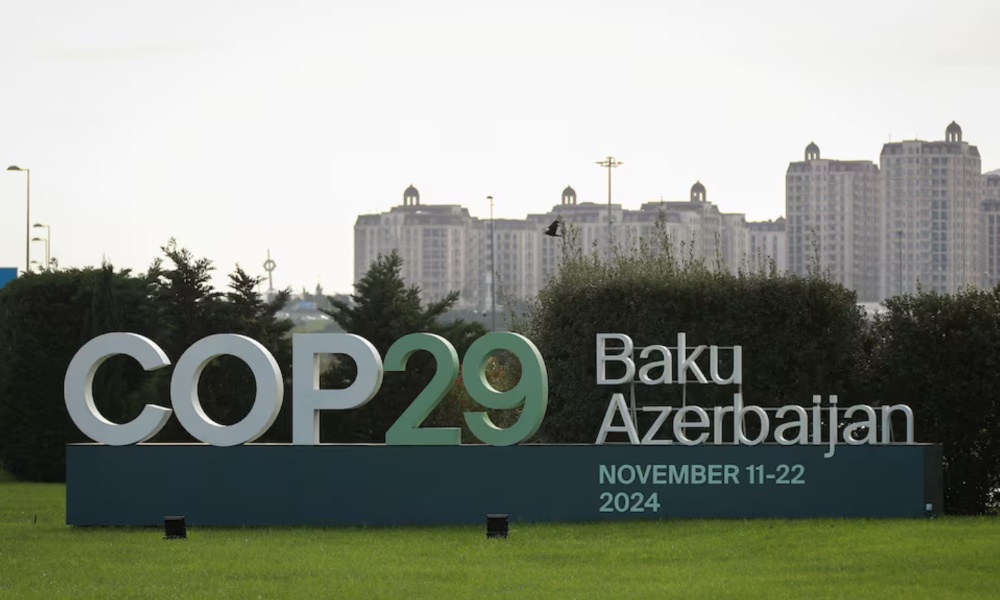
Marathon COP29 climate talks enter their final stretch on Wednesday when the Azerbaijani hosts are due to publish an update on negotiations so far as the summit seeks to agree a new goal on issues including climate finance.
The talks, which began on Nov. 11, are due to end on Friday afternoon but COP summits have a history of running long, Reuters reported.
Below is a breakdown of the known sticking points and what happens next:
DRAFT TEXTS
Officials spent the first week trying to agree to deals across a range of different issues including finance, carbon markets, the future of fossil fuels and efforts to mitigate the rise in global temperatures.
Now, the outstanding items have been handed over to ministers so they can use their political clout to try to get agreements across the line.
The next steps are about trying to whittle down draft texts containing a huge range of wording options into a final document that can be adopted by consensus at the end of the summit.
Draft texts will be published periodically by the Azerbaijani presidency as they zero in on an acceptable deal.
CLIMATE FINANCE GOAL
The primary aim of COP29 is to agree a new target for how much money should be provided to developing countries to help them adapt to climate-fuelled weather disasters and transition to cleaner energy systems.
A previous goal to provide $100 billion per year expires in 2025. The new goal needs to be $1 trillion annually by the end of the decade, according to experts.
The focus in the negotiating rooms has been on defining the structure of a new target, including what counts as climate finance and who needs to pay in. Only once that is agreed are parties expected to start talking about the size of the target.
Issues to iron out include whether countries such as China should be counted among the richer core donors, and the degree to which countries should provide finance in the form of grants or loans.
A text has been scheduled for publication on Wednesday evening.
FOSSIL FUELS
Countries have so far struggled to agree on the right way to follow up on a deal at last year's summit to transition from fossil fuels.
European states want to see that commitment referenced throughout any deal at Baku to reinforce the importance of following through with firm action. Others, including the Arab Group of states, argue it does not need to be.
If past COPs are anything to go by, the moment any deal text is published, delegates will be searching for the phrase "fossil fuels" to see if there is any sign of backsliding.
CARBON MARKETS
Talks in Baku began with an early deal on some of the quality standards that would govern a global market for carbon credits, but there is still much to be agreed on, including how to track trades and disclosure rules.
If fully agreed, market watchers expect a U.N.-backed global market could fund billions of dollars of projects that reduce greenhouse gas emissions from projects such as reforestation.
Scrutiny of the details is intense amid concern that without watertight regulation carbon credits may not deliver the benefits they claim.
FINAL HOURS
COPs rarely finish on time. COP28 in Dubai closed almost a full day after the initial deadline; COP27 in Egypt overran by around 36 hours.
In the final hours, delegations consult intensively in private with the presidency on the proposed deal, often through the night, in search of something that can be adopted by consensus.
Once finalised, every country is called to the main hall to begin an hours-long process of formal approval.
Climate Change
Toxic smog persists over India’s north; Delhi pollution remains severe
India battles air pollution every winter as cold, heavy air traps dust, emissions, and smoke from farm fires started illegally in the adjoining, farming states of Punjab and Haryana
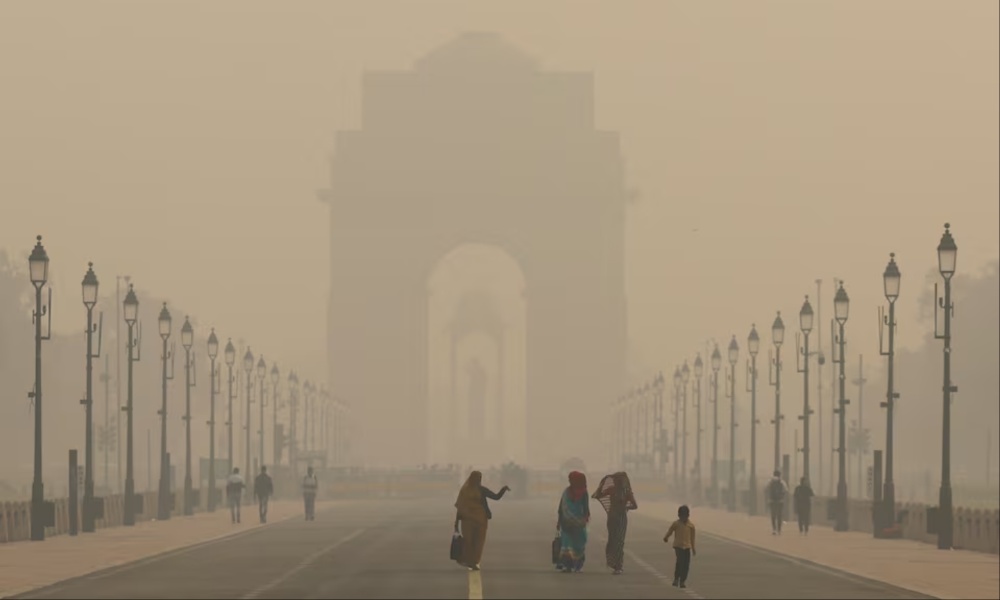
Residents in India's northern states woke up to another day of poor air quality on Tuesday, as a layer of dense fog shrouded most of the region, and pollution in the capital Delhi remained severe.
India battles air pollution every winter as cold, heavy air traps dust, emissions, and smoke from farm fires started illegally in the adjoining, farming states of Punjab and Haryana.
The air quality index (AQI) touched a peak of 491 in Delhi on Monday, forcing the government to introduce restrictions on vehicle movement and construction activities, and schools to conduct classes online.
On Tuesday, Delhi's 24-hour air quality index (AQI) reading was at 488 on a scale of 500, India's Central Pollution Control Board (CPCB) said, and at least five stations in the capital reported an AQI of 500, Retuers reported.
CPCB defines an AQI reading of 0-50 as "good" and above 401 as "severe", which it says is a risk to healthy people and "seriously impacts" those with existing diseases.
Swiss group IQAir ranked New Delhi as the world's most polluted city with air quality at a "hazardous" 489, although that was a significant improvement from Monday's 1,081 reading.
Experts say the scores vary because of a difference in the scale countries adopt to convert pollutant concentrations into AQI, and so the same quantity of a specific pollutant may be translated as different AQI scores in different countries.
India's weather department said a shift in the fog layer towards the northern state of Uttar Pradesh had helped improve visibility over Delhi.
Visibility dropped to zero metres in Uttar Pradesh's capital Agra, which lies southeast of Delhi. The Taj Mahal, India's famed monument of love, has been obscured by toxic smog for nearly a week.
The strict measures to mitigate the impact of high pollution have hurt production at more than 3.4 million micro, small and medium enterprises in the nearby states of Punjab, Haryana and Delhi, local media reported.
-
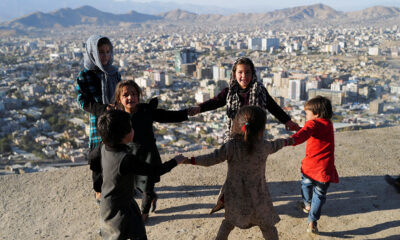
 Latest News5 days ago
Latest News5 days agoEU marks International Children’s Day, says it supports Afghan children
-

 Latest News3 days ago
Latest News3 days agoU.S. House approves bill on evacuation of Afghan allies
-

 Sport3 days ago
Sport3 days agoAriana News to broadcast IPL auction live and exclusively in Afghanistan
-
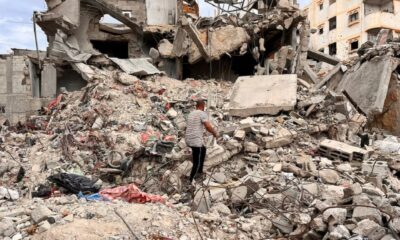
 World4 days ago
World4 days agoUS vetoes UN Security Council resolution on Gaza ceasefire
-
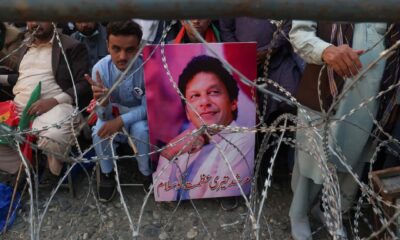
 Regional4 days ago
Regional4 days agoPakistan’s ex-PM Imran Khan gets bail in state gifts case, his party says
-
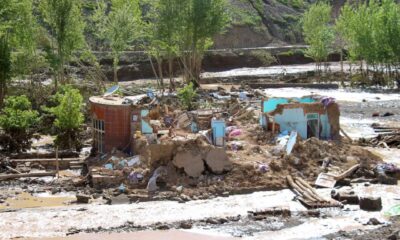
 Latest News4 days ago
Latest News4 days agoUN moves to unlock stuck climate financing for Afghanistan
-

 Sport4 days ago
Sport4 days agoPakistan trumps Afghanistan by only 13 runs in U19 Tri-Series One Day match
-
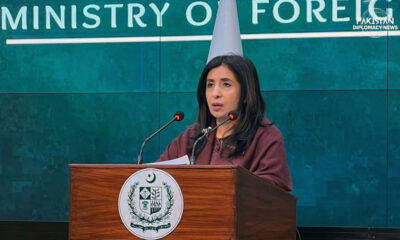
 Latest News4 days ago
Latest News4 days agoPakistan rejects suggestion of appointing a new special envoy for Afghanistan


